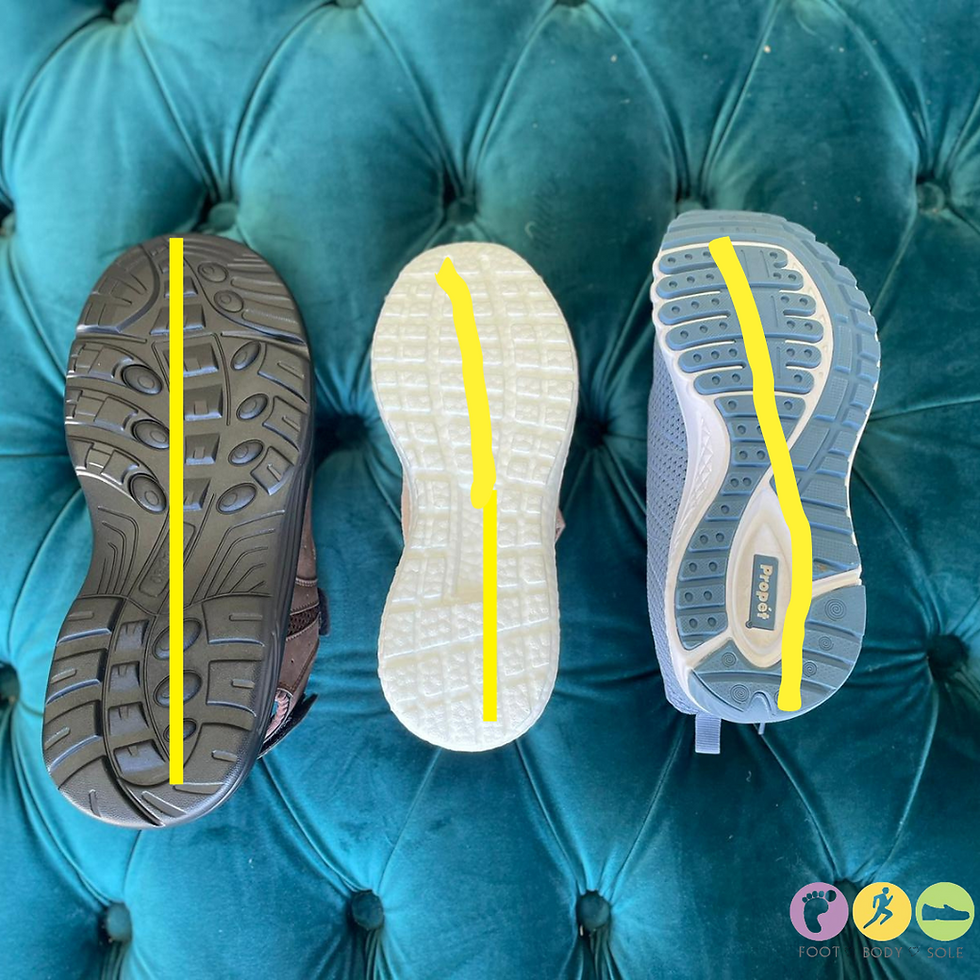ANKLE REHAB- what you can do at home
- Foot Body Sole
- May 17, 2021
- 4 min read
Ankles are a source of chronic pain for many of us.
Both the inside and outside of the ankles can become sore and for similar and different reasons (sound confusing? It can be!).
KEEP READING TO DISCOVER SOME MORE ABOUT THE ANKLES AND HOW YOU CAN REHAB THEM AT HOME!
LETS START WITH SOME ANATOMY
The outside of ankles are usually "rolled" or "sprained" easily. This is due to 3 small ligaments which hold the outside leg bone (Fibula) to the outside of the foot.
Conversely, on the inside of the foot the leg bone (Tibia) is held onto the foot with a very wide, strong band.
The small ligaments on the outside of the ankle are far more easily strained than the big, strong "deltoid" ligament on the inside, and this is usually why if you sprain your ankle, your foot will roll in.
HOWEVER, occasionally you may experience "medial ankle pain" or pain on the inside of the ankle. This is usually due to excess flattening of the feet which stretches tendons and ligaments which help to hold up the arch. Pain on the inside of the ankle usually comes from reduced support such as a change of shoes, weight gain or a change of activity.

"Lateral ankle pain," or pain on the outside of the ankle is usually quite common and associated with footwear changes, certain foot positions, weight and activity also. Importantly, this lateral ankle pain can be as a result of acute trauma to the area such as when you sprain your ankle because the 3 small ligaments are not very strong.

Does this pain sound familiar? Keep reading to discover how we can help ankle pain!
It is important to seek help for your ankle pain and get it diagnosed correctly. Correct diagnosis and assessment is beneficial in many ways:
Differential diagnoses such as fractures and muscle tears can be assessed.
A full management plan can be put in place, including potential in- house therapy and direction of at- home rehabilitation.
Risk factors such as activity, age, weight, exercise and other comorbidities can be assessed and discussed, to ensure that once the pain DISAPPEARS, it does not REAPPEAR!
Footwear can be assessed and discussed with recommendations tailored to your specific foot type can be provided.
Pain from ankles can reduce far quicker with correct assessment and treatment
Potential serious pathologies can be treated thus reducing the long- term morbidity associated with these conditions due to worsening pain and elongated recovery.
Often, other pains can occur due to compensations provided by the body to reduce strain on the painful ankle. Often, other regions in the foot, knee or leg can exhibit pain and often the other side of the body is affected long- term also.
If your ankle pain is only niggling or you are concluding a series of therapy, at- home exercises are extremely beneficial. NOT TO BE FORGOTTEN: even if no ankle pain exists, at- home strengthening and proprioceptive exercises can REDUCE your chances of pain beginning.
3 AT- HOME EXERCISES TO HELP WITH ANKLE STRENGTH / PAIN / REHABILITATION
Alphabet Tracing: while you are sitting/laying down, you can trace the letters of the alphabet with your feet. You can choose upper or lower case! This exercise is beneficial because it puts your ankles (and feet) through a full range of motion, and prepares you for walking. --> you can even trace out words with your feet to make it more interesting.
Single Leg Balance: Standing on the floor with one leg (or a pillow if you're really steady!) helps to increase the strength of your feet as a whole, and is particularly indicated for ankle rehabilitation and strengthening as the tendons and ligaments are put through small stabilisation movements when you balance on a single leg, and this helps to increase strength and proprioception.
High Knee Marching / Hopping: High knee marching is effective when slowly and safely completed. This exercise focusses on safe ground contact and stability of the ankle when the foot hits the ground. This exercise involves bringing the knees up like a soldier marching, and slowly placing the feet back on the ground. If ankles are not sore and only if balance allows it, gentle jumping or hopping can be safely performed. This exercise increases the strength and proprioception of ankle ligaments and tendons in a more advanced manner. With this exercise being of a higher intensity, it must be performed safely and have had previous ankle strengthening performed prior to completion.
*DON'T FORGET*
Podiatrists can send for bulk- billing foot and ankle x- rays and ultrasounds.
Podiatrists are specialists in the foot and ankle. We see patients with ankle sprains extremely frequently in the clinic and look holistically for cause and prevention of reoccurrence.
OTHER THINGS TO CONSIDER ABOUT ANKLES:
Wearing shoes with correct support such as Podiatry friendly dress shoes and quality runner brands is important as shoes provide the groundwork for ankle support.
Once the ankle ligaments are damaged, rehabilitation is key as they weaken over time.
Ankle rehabilitation can become very complex and time consuming if left untreated as more therapy is required, compensational pains are likely to occur. Overall, activities of enjoyment take longer to return to and therapy becomes more costly due to time requirements and complexity of treatment required for rehabilitation- so get your pain assessed quickly!
If you have any questions at all about your ankles, we are more than happy to answer them at Foot Body Sole! Our Footwear Specialists and Podiatrists can also recommend ankle- friendly shoes! Give us a call on 1800 778 316 or visit us in store in Albert Park.










Comments